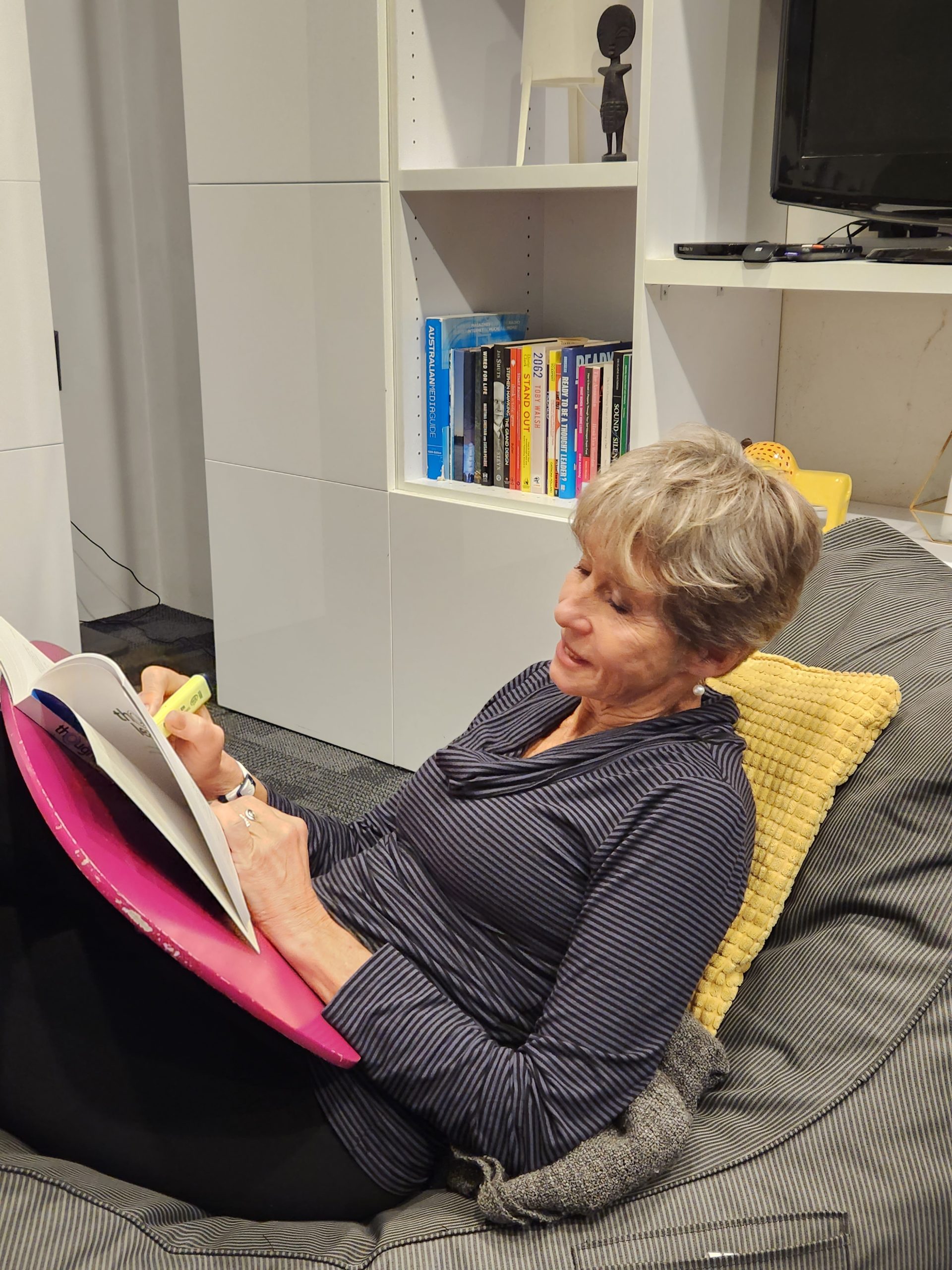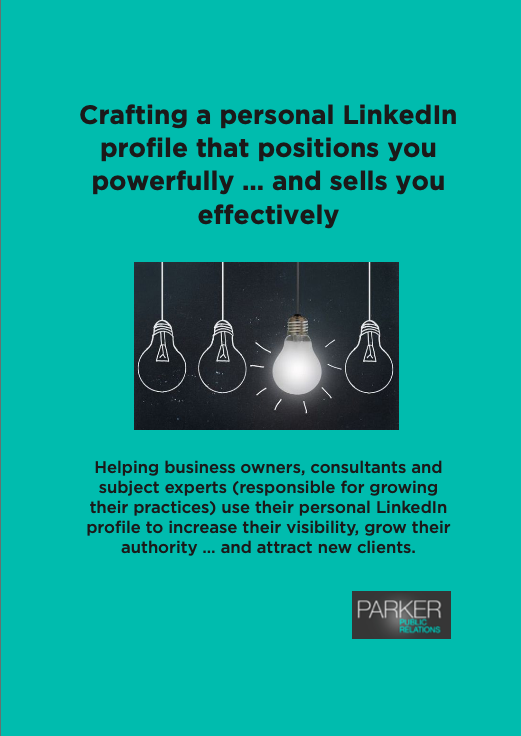What gives YOU the author the confidence, conviction and certainty that you have written a fabulous business book that you should be proud of and excited to share with your clients, colleagues and friends.
What does a great book actually look like?
This question was uppermost as I worked my way through a bundle of wonderful books as a judge for this year’s Australian Business Book Awards.
(Yep, that’s me on my beanbag, in my ‘girl cave’, yellow highlighter in hand and looking oh so studious!)
What is it that separates a great book from something that is mediocre?
Typically a great book includes a masterful mix of the following ingredients: (The opinions are strictly mine)
1. Addresses a very real need in the marketplace
The book is genuinely useful to the very people it is written for. It either introduces them to a brand-new concept, helps solve a problem or inspires them to change or improve their professional or private lives in some way.
2. Has a relevant, if not memorable title
This is a biggie for me. Not only should the title and sub-title reflect the content of the book, but it should be clever and dare I say, unforgettable. Ideally it should reflect the problem the author is solving, the anxiety that is being alleviated or concept that is being introduced.
3. Has a well-structured narrative
The structure should provide a logical flow of ideas. Ideally it should kick off by setting the scene (describing the big hairy problem or idea) before systematically moving its way through the solution or fleshing out the new approach to doing things.
4. Chapters are restricted to just one idea
Given that I am one of those people who likes to dip in and out of a business book, I appreciate authors who limit chapters to just a single concept. I also appreciate their closing off with a summary, core lesson or big take-out. All this helps readers (and people like me) recall what they have learned and further cement their new-found knowledge.
5. Is written in an engaging style
For me an ‘engaging’ style means it is easy to read, free of unnecessary jargon and irrelevant words and brimming with stories, anecdotes, examples and case studies that help to bring the content to life. Bottom line, the book is written with the reader in mind and doesn’t use unnecessary high-brow language simply to impress!
6. Is attractive to look at
And yes, the book needs to look appealing to invite me in. I’m not just talking about the front cover. I’m also talking about internal formatting – plenty of sub-headings, diagrams, pull-out quotes and things that not only make the book attractive to look at but the content easier to digest.
7. Is a manageable length
I’m not a fan of overly long books which is something that not everyone will agree with. From my perspective the preferred length should be 50,000-60,000 words or 200 pages (300 at the very most). After than authors run the risk of waffling, being repetitive and padding out simply for the sake of it!
It is important to remember that less is sometimes MORE.
Hope you found my tips useful.
At Parker Public Relations we help business owners, coaches and consultants create books they are proud of.
Need to find out more: Call Wendy Parker on 0422 694 503


